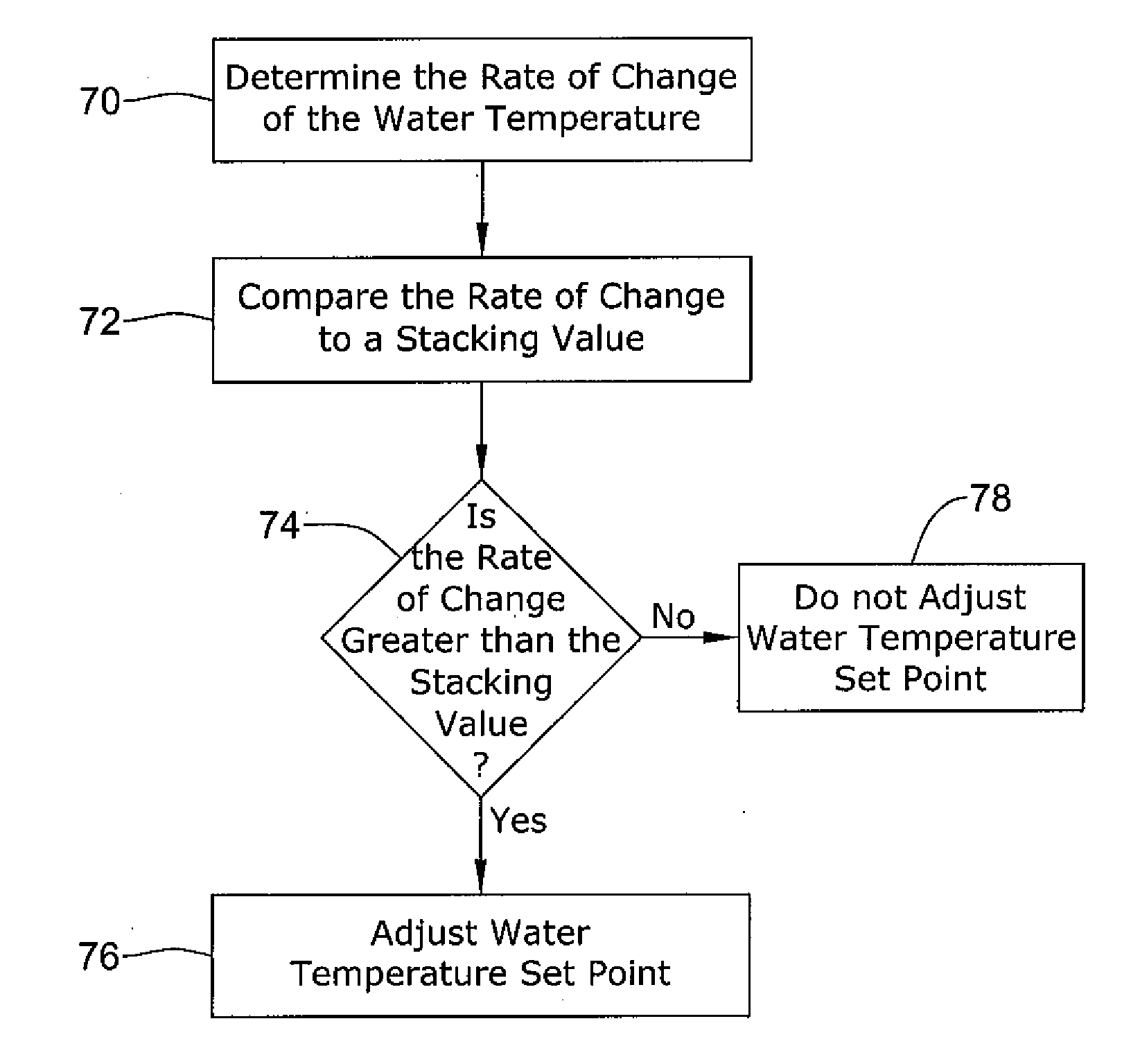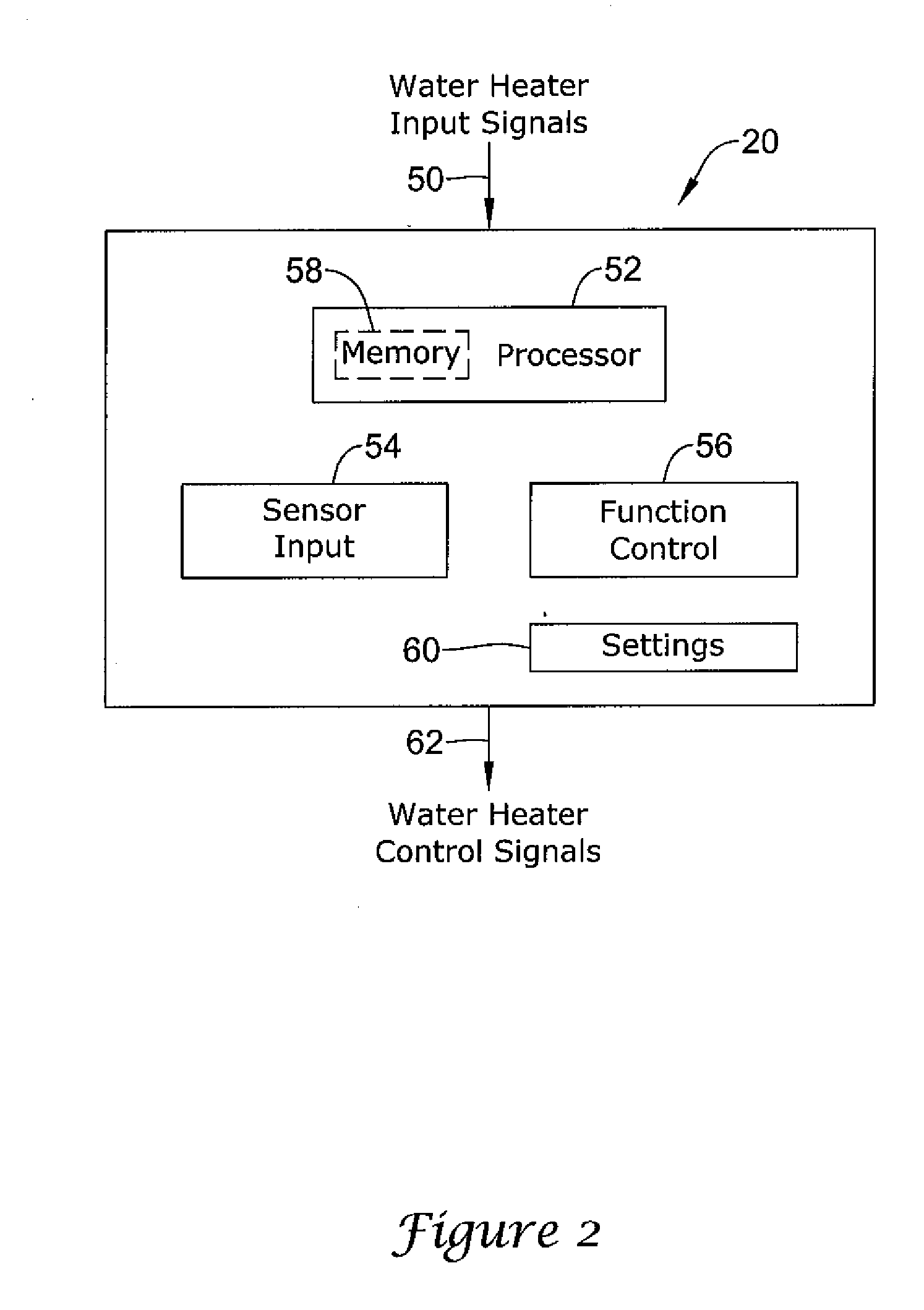Water heater stacking detection and control
a technology for water heaters and stacking, applied in the field of controllers and methods for controlling water heaters, can solve the problems of water heaters, water heater tanks may be particularly susceptible to stacking, and relatively short heating cycles, so as to limit the effect of stacking and reduce the water temperature set point
- Summary
- Abstract
- Description
- Claims
- Application Information
AI Technical Summary
Benefits of technology
Problems solved by technology
Method used
Image
Examples
Embodiment Construction
[0019]The following description should be read with reference to the drawings wherein like reference numerals indicate like elements throughout the several views. The detailed description and drawings show several embodiments which are meant to be illustrative of the claimed invention.
[0020]The present invention relates generally to water heaters, and more particularly, to controllers and methods for controlling water heaters. FIG. 1 is cutaway view of an illustrative water heater 10. The illustrative water heater 10 includes a tank 12, an insulating layer 14, an external shell 16, a heater 18, and a controller 20. Tank 12 holds water that is to be heated and may be constructed of steel or other heat conducting material. Illustrative tank 12 has an inner surface 22, an input supply tube or dip tube 24, an output conduit or pipe 26, a drainage valve 28, a rust inhibiting liner 30, and an outer surface 32.
[0021]Insulating layer 14 may be located between outer surface 32 of tank 12 and...
PUM
 Login to View More
Login to View More Abstract
Description
Claims
Application Information
 Login to View More
Login to View More - R&D
- Intellectual Property
- Life Sciences
- Materials
- Tech Scout
- Unparalleled Data Quality
- Higher Quality Content
- 60% Fewer Hallucinations
Browse by: Latest US Patents, China's latest patents, Technical Efficacy Thesaurus, Application Domain, Technology Topic, Popular Technical Reports.
© 2025 PatSnap. All rights reserved.Legal|Privacy policy|Modern Slavery Act Transparency Statement|Sitemap|About US| Contact US: help@patsnap.com



